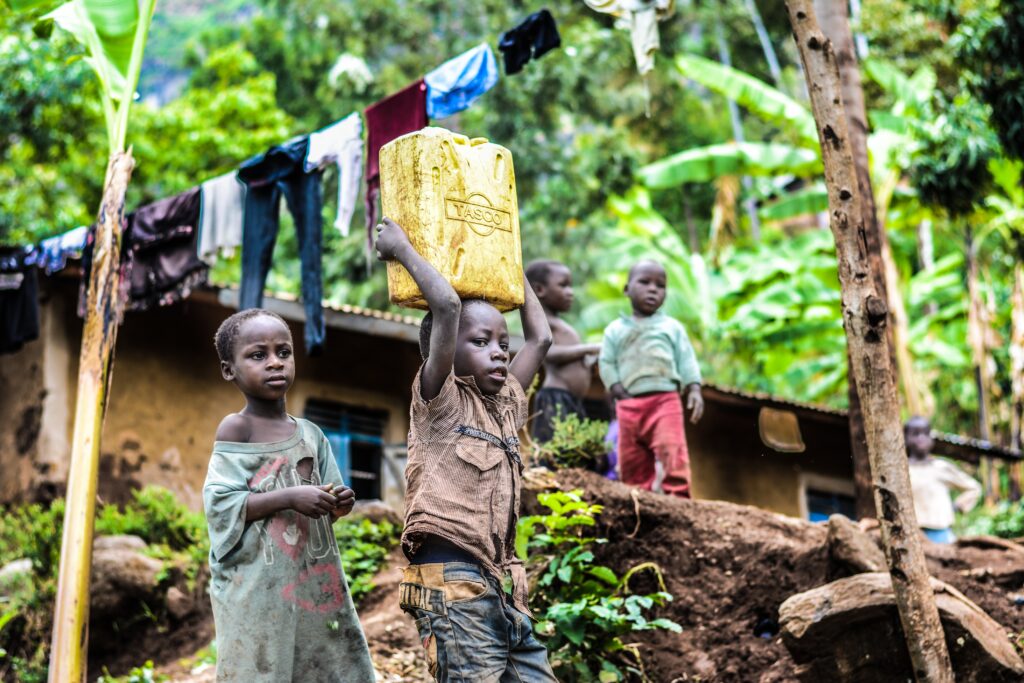The number of children involved in child labor has dropped by nearly 40% over the past two decades. This steady transfer from work to school has helped break cycles of poverty and enable brighter futures for children around the world. However, this positive trend threatens to be dismantled by the coronavirus pandemic and its impact on children’s education and world economies.
Educational Concerns
The coronavirus pandemic has caused millions of children’s education to halt, with many being forced to work to support their family’s economic needs as incomes have fallen or vanished. A shift of this degree will undo years of education gains and undermine the prospects of children climbing out of poverty. The crisis is exacerbating pre-existing education disparities by reducing learning opportunities for disadvantaged groups – those living in poor or rural areas, refugees, girls, and people with disabilities.
Even before the pandemic, more than 250 million children were out of school, with three-quarters of these children living in Sub-Saharan Africa and Southern Asia. The United Nations estimates that 23.8 million additional children and youth, aged from pre-primary to tertiary school, may drop out or not have access to school next year due to COVID-19’s economic impact alone. School closures increase girls’ and young women’s vulnerability to child marriage, early pregnancy, and gender-based violence – all of which decrease the likelihood of continuing their education. A study from Argentina found that even temporary school closures could result in reduced earnings in adulthood and permanently lower amounts of schooling, meaning that the pandemic’s effects on education could stretch far into the future. Additionally, these closures hamper the distribution of essential services to communities, including school feeding programs, measures to reduce the risk of gender-based violence, and childcare provisions that enable parents to go to work.
Economic Impacts
Not only is COVID-19 detrimental to the educational growth of children, but its impact on the economy is contributing to increased amounts of children entering the workforce. The United Nations Industrial Development Organization found that approximately 81% of countries have experienced a decrease in industrial production, with the greatest impact occurring in countries where the pandemic is severe and in countries that rely on global trade, commodity exports, and external financing. Emerging markets and developing economies, which often have high amounts of industrial production, are expected to shrink by 2.5% this year. Industrial production has had an important role in the economic growth of numerous major world economies. A decrease in industrial production could lead to economy-wide suffering, which can negatively impact world economic markets.
These economic downturns are expected to reverse years of progress towards development goals and potentially plunge tens of millions into poverty. Increased rates of poverty will drastically impact families’ abilities to maintain a stable income, while the decrease in stable economic exports and trade will limit caregivers’ abilities to remain in work and will likely increase child participation in the workforce.
Additionally, increased parental mortality due to COVID-19 could increase the prevalence of child labor, with findings demonstrating that paternal death or disability was one of the strongest predictors of engagement in the harshest forms of child labor. It has previously been shown in some countries, such as Mali and Tanzania, that when caregivers fall sick or die, children often take over parts of their household responsibilities.
The Dangers of Child Labor
Children who enter child labor are unlikely to stop working even if their economic situation improves. Instead, the implications of child labor will continue to impact their lives through fewer opportunities for education and worse employment opportunities when they are adults. Children engaged in child labor have historically been forced into situations that involve heavy manual labor, sex work, mining, working in factories, and the production or trafficking of illicit substances. These jobs carry risks of injury or worse, and the hazards are especially dangerous for children – many of whom lack forms of protective equipment. The already present health risks of child labor are only exacerbated by the risks of contracting COVID-19.
Efforts to Combat the Crisis
The United Nations works with the International Labour Organization (ILO) to collect data on child labor. These efforts are strengthened by UNICEF’s efforts to strengthen birth registration systems, ensuring that all children possess birth certificates that prove they are under the legal age to work. The June 2020 World Day Against Child Labour ‒ hosted by the United Nations, the Global March Against Child Labour, the International Partnership for Cooperation on Child Labour in Agriculture, and the International Labour Organization ‒ focused on the impacts of the coronavirus pandemic on child labor, with emphasis on how labor market shocks are having an enormous impact on people’s livelihoods. The impacts of this year’s campaign are yet to fully be seen, but the event worked to draw attention to this international issue and create strategies to combat the child labor crisis.
Potential economic and educational losses, combined with the risks of child labor have caused governments worldwide to consider learning continuity a priority. The United Nations and Global Education Coalition have worked to develop, advocate and expand their capacities to meet remote learning needs. It is unclear what the impact of these interventions will be, but the United Nations and various NGOs are working together to try and combat the educational losses. With no clear plan to re-open schools or to combat the coronavirus, questions remain as to what will be the next steps in ensuring children return to school.
Looking Ahead
The cost of fighting COVID-19 and reductions in tax revenue caused by the economic downturn are likely to negatively affect public education spending. In an effort to combat this issue, the World Bank will finance up to $160 billion dollars over the next 15 months to help countries tackle the health, economic, and poverty shocks they are facing. If school fees increase or school quality deteriorates post-COVID-19, the world will likely see an increase in child labor. Governments should invest in education systems to keep them affordable or free throughout the COVID-19 pandemic. Evidence from India displays that the impact of negative economic shocks on child labor was minimized in regions where schooling was more affordable.
Under the United Nations Sustainable Development Goals, governments set a goal of ending child labor by 2025. Meeting that goal seems increasingly unlikely, but in the short term, governments should do all they can to ensure that child labor continues to decrease globally.
Efforts could include further financial assistance for families hit the hardest by the coronavirus, to help them meet basic needs without resorting to child labor. Governments can ensure educational resources are subsidized, which would significantly reduce the financial barriers to attending school. Particular attention should be paid to the period shortly after schools reopen, in which it will be essential to ensure kids re-enter school. Additionally, providing economic relief for adults by ensuring sick leave, unemployment insurance, and living wages, can enable them to better support their families throughout this crisis. All of these actions could increase the likelihood that children will remain in school, saving them from the perils of child labor.






